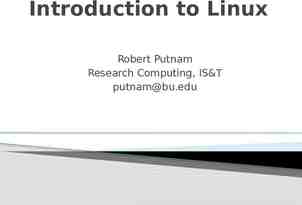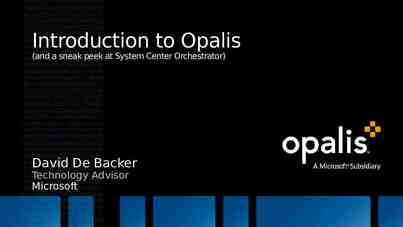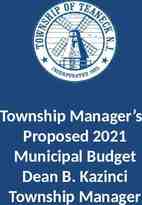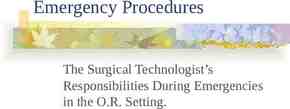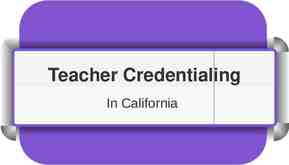Weeks 7-8, 10-03-2016 – 10-16-2016 Keep all of your handouts to study.
35 Slides1.45 MB

Weeks 7-8, 10-03-2016 – 10-16-2016 Keep all of your handouts to study. POETRY Unit 2A: Poetry: We will analyze and create poetry based on genrespecific literary techniques. Analyze the effects of diction and imagery (controlling images, figurative language, understatement, overstatement , irony, paradox) in poetry [3a] Explain the role of irony, sarcasm, and paradox in literary works [7A] Analyze the structure or prosody (meter, rhyme scheme ) and graphic elements (line length, punctuation, word position ) in poetry.[3A] Writing and WRITING POETRY Using a variety of poetic techniques , structural elements, figurative language) and a variety of poetic forms, sonnets, ballads COMPARE AND CONTRAST how events are presented and information is communicated by visual images (e.g., graphic art, illustrations, news photographs) versus non-visual texts.[12A] VOCABULAR Y infer word meaning through the identification and analysis of analogies and other word relationships. [1C] PRESENTATION READING/COMPREHENSION OF LITERAR Y TEXT/ NON FICTION Students make inferences and draw conclusions about the varied structural patterns and features of literary nonfiction and provide evidence from text to support their understanding [6] Evaluate how messages presented in media reflect social and cultural views in ways different from traditional texts.[12A] Look at your Halloween stories Due next week Reteach: Writing Strategies [13A-E] Vocabulary Strategies Reading strategies Poetry Unit Speaking Mantenga todos los folletos para estudiar. POESÍA Analizar los efectos de dicción y de imágenes (control de imágenes, el lenguaje figurado, eufemismo, la exageración, la ironía, paradoja) en la poesía [3a] Explicar el papel de la ironía, el sarcasmo, y la paradoja en las obras literarias [7A] Analizar la estructura o la prosodia (metro, rima) y elementos gráficos (longitud de la línea, puntuacion, posición de la palabra) en la poesía. [3A] ESCRIBIR POESÍA Usando una variedad de técnicas poéticas, elementos estructurales, lenguaje figurado) y una variedad de formas poéticas, sonetos, romances COMPARAR Y CONTRASTAR cómo los acontecimientos se presentan y la información es comunicada por las imágenes visuales (por ejemplo, arte gráfico, ilustraciones, fotografías, noticias) frente a los textos no visuales. [12A] VOCABULARIO Deducir el significado de la palabra a través de la identificación y análisis de las analogías y otras relaciones de las palabras. [1C] PRESENTACIÓN LECTURA / comprensión de textos literarios / NO FICCIÓN Los estudiantes hacen inferencias y sacan conclusiones sobre las variadas estructuras y rasgos de la literatura de no ficción y proporcionan evidencia del texto para apoyar su comprensión [6] Evaluar cómo los mensajes que se presentan en los medios de comunicación reflejan puntos de vista sociales y culturales en diferentes formas a partir de textos tradicionales. [12A] Mire sus historias de Halloween? Debido próxima semana volver a enseñar: Estrategias de escritura [13A-E] Estrategias de vocabulario Estrategias de lectura Hablando

Monday October 3 Be ll Rin in yo ger – wri ur sp iral. te the figu Vo Use i cabu rative t in a s langu vocab lary Revi e age v ntenc e u w l a – ma ocab ry i n e wit Co u l ar y k your h e m ma a s n u re yo e s p x a m pl u i r s a An u age l . h e. (Test ave a alyze Grad ll of t Poetr HA e he ) y LLOW E EN S Vo TORY cabu l ar y E Wr xam iting WOR K ON YOUR STOR Y

Vocabulary and Dictionary Skills – Test Grade Due Friday Directions: Create a 18 slide PowerPoint where you demonstrate the following knowledge: Analyze textual context (within a sentence and in larger sections of text) : Distinguish between the denotative and connotative meanings Describe and show the relationship between the origins and meanings of foreign words or phrases used frequently in written English and Describe the historical events or developments Foreign Word/Phrase Origin Denotative and Connotative Meanings Historical Events 1. ad nauseam 2. avant-garde 3. bon appetit 4. bona fide 5. bon voyage 6. caveat emptor 7. carte blanche 8. cliché 9. coup d'é·tat 10. fait accompli 11. faux pas 12. glasnost 13. ipso facto 14. modus operandi 15. pas de deux, 16. quid pro quo 17. tete a tete Use general and specialized dictionaries, histories of language books of quotations a glossary thesaurus related references as needed

Poetry Book assignment Test Grade Create original poetry with the following: diction Imagery controlling images effect of sound on meaning figurative language understatement overstatement irony Paradox Protagonist antagonist Create original poetry with the following: meter rhyme scheme: end internal slant eye other poetry elements graphic elements: line length punctuation word position Create original poetry with the following: drama biography autobiography myth tall tale dialogue tragedy sonnets ballads free verse comedy epic Create original poetry with the following: effects of metrics rhyme schemes

diction Imagery controlling images figurative language understatemen t overstatement irony Paradox Protagonist antagonist meter rhyme scheme internal

FIGURATIVE LANGUAGE; Poetry, Drama and Pros Alliteration – the repetition of usually initial Consonant sounds in two or more neighboring words or syllables. Example: The wild and wooly world waits and wonders whose we’ll walk by . Assonance – a resemblance of sound in words or syllables. Example: holy & stormy and fleet feet by sleeping geese. Cliché – a word or phrase that has become overly familiar or commonplace. No pain, no gain. Hyperbole – big exaggeration usually with humor Example: mile high ice-cream cones. Idiom – the language peculiar to a group of people Example: She sings at the top of her lungs Metaphor – comparing two things by using one kind of object or using in place of another to suggest the likeness between them Example: Her hair was silk Simile – a figure of speech comparing two unlike things that are often introduced with like or as Example: The sun is like a yellow ball of fire in the sky Onomatopoeia – naming a thing or an action by imitating the sound associated with it Example: buzz, hiss, roar, woof Personification – giving something human Qualities. Example: The stuffed bear smiled as the little child hugged him close. I can explain the major differences of structural elements between poems, drama and pros. Poetry Some poems rhyme, but not always Written in lines Lines are grouped into stanzas or verse Has beats or a rhythm (meter), almost musical Includes figurative language (simile, metaphor) Written to entertain and express a mood Examples: Free verse, ballad, Haiku, Acrostic Narrative (tells a story) Limerick Drama Tells a story Cast of characters Setting Plot Stage directions (actions for the characters) Entertaining Descriptions)background information) Written to be performed for an audience Examples: Plays, skits, musical, comedy, opera, Reader’s Theatre Prose Written in sentences. One after the other, Sentences are grouped into paragraphs Regular writing Written to entertain, inform, or persuade a reader Examples: Books, newspapers, articles, essays, etc. Butterflies and DAYDREAMS

5 ACROSS kind of object or using in place of another to DOWN 1 Consonant sounds in two or more neighboring 7 a resemblance of sound in words 2 by imitating the sound associated with it 8 the language peculiar to a group of people 10 words or syllables. 3 suggest the likeness between them 4 giving something human qualities. 6 big exaggeration usually with humor 12 13 Tells a story comparing two things by using one 9 the repetition of usually initial 11 naming a thing or an action 14 Written in sentences. One after the other 17 19 things that are often introduced with like or as 15 or syllables. a figure of speech comparing two unlike 16 rhyme, but not always, Written in lines 18 No pain, no gain.

Root Words Prefix Anim Ann Anti Able -ible Al Meaning life spirit year against can be done can be done having characteristics of Sentido espíritu de vida Año En contra Puede hacerse Puede hacerse Que tengan características de Key word unanimous annual antifreeze capable personable always palabra clave Unánime Anual Anticongelante Capaz De buen ver Siempre -ial having characteristics of Que tengan características de fallible falible De Dis Ed, En -audi- (L) Opposite Not, opposite of Past-tense Made of hear Opuesto No, enfrente de Pasado Hecho de oír Defrost Disagree Hopped wooden audience Descongelar Discrepar Saltado De madera audiencia en, em Er Er -auto –G Fore Cause to Comparative One who Self Before Debido a Comparativo quien yo Antes de encode, embrace Higher Worker, actor Automatic forecast abrazo, Mayor Obrero, actor Automático pronóstico

Plot Exposition Climax Resolution flashback foreshadowing In medias res Setting Theme – worldly ideas Tone -- author Mood -- reader Symbol-Symbolism Archtype Foreign Words Ad nauseam Bon voyage Bona fide Carte blanche Caveat emptor Fait accompli ipso facto modus operandi Fait accompli Faux pas Cliché Poetic Tools alliteration assonance allegory allusions cliché hyperbole metaphor imagery repetition illustrations idiom imagery -controlling images -visual images simile sarcasm personification onomatopoeia overstatement prosody punctuation word position paradox understatement diction figurative language Point of View (POV) First Person POV Second Person POV Third person POV Third person Omniscient POV Stream of Consciousness Characterization character types protagonist antagonist dynamic static round flat stereotype Graphic graphic art elements line length line length line breaks rhyme scheme rhythm meter word position Most Commonly Misspelled Words Accommodate Description Laid led Prominent Accumulate Achievement Dictionary Definition Lightning Pursue Desperate Pronunciation Absence Knowledge Profession Accidentally Describe Laboratory Professor Irony Verbal irony Dramatic irony Situational irony

COMPREHENSIVE QUESTIONS TONE AND MOOD OF A PASSAGE Read closely to determine what the text says explicitly and to make logical inferences from it; cite specific textual evidence when writing or speaking to support conclusions drawn from the text. Title of the Story: Does the title help to set the mood for the reader? Identify the genre. What is the genre of the passage? What is the author’s tone? Identify Sequence: What happened at the end of your reading this week? Infer Setting Traits: Describe the setting in the story. How would the story change if the author’s tone changed ? Give evidence: Explain why you think that. 6. Identify Action: How does the author’s tone make the characters behave the way they do? 7. Infer Motive: Why do you think about the mood of the story? 8. Summarize the story. Write your summary on these lines. TONE the general character or attitude of a place, piece of writing, situation, etc; AUTHOR’S ATTITUDE Infer the main idea: What is the main idea of the passage? EXPRESSED THROUGH WORDS THEY USE. MOOD a temporary state of mind or feeling; THE What do you think will happen next? FEELING THE READER GETS FROM READING. TONE(CAUSE) --PRODUCES—MOOD (EFFECT) Write about what you read. Explain a lesson people can https://www.pinterest.com/pin/41095415322545668/ learn from reading this story. Use examples from the story and your own experience TO MAKE A CONNECTION. Source: Merriam-Webster's Learner's Dictionary

COMPREHENSIVE QUESTIONS TONE AND MOOD OF A POEM COMPREHENSIVE QUESTIONS TONE AND MOOD OF A PASSAGE Read closely to determine what the text says explicitly and to make logical inferences from it; cite specific textual evidence when writing or speaking to support conclusions drawn from the text. Title of the Story: Does the title help to set the mood for the reader? Identify the genre. What is the genre of the passage? What is the author’s tone? Identify Sequence: What happened at the end of your reading this week? Infer Setting Traits: Describe the setting in the story. How would the story change if the author’s tone changed ? Give evidence: Explain why you think that. 6. Identify Action: How does the author’s tone make the characters behave the way they do? 7. Infer Motive: Why do you think about the mood of the story? 8. Summarize the story. Write your summary on these lines. Infer the main idea: What is the main idea of the passage? What do you think will happen next? Write about what you read. Explain a lesson people can learn from reading this story. Use examples from the story and your own experience TO MAKE A CONNECTION.

10-04-2016, 10-11-2016 BELL RINGER: TUESDAY http://online.fliphtml5.com/xxaf/jyow/#p 1 Due Today’s Language Practice: https://dk061.k12.sd.us/August%20Dol.htm http://www.educationworld.com/a lesson/archives/edit.shtml National Football League (NFL) teams do alot to get ready for the knew football season that begin each fall. In april, the league holds a draft where teams pick player’s. Over the summer, the players practis and Answerstarting Key train. in September, each team spends the next 17 week playing National Football League (NFL) teams do a lot to get ready for the newfootball season that games. The ends with playoffs and teams the championship Do begins each fall.season In April, the league holds a draft where pick players. Over game. the summer, you havepractice a favorit team you willeach watch year. the players and football train. Starting in September, teamthis spends the next 17 weeks playing games. The season ends with playoffs and the championship game. Do you have a favorite football team you will watch this year? october isEducation a good World time to harvist pumpkins. they can be used for many Copyright different purpose. Some are carved into jack-o’-lanterns, while others are baked into deserts and breads. Pupkin seeds can be a special treat when roasted The bigest pumpkin ever recorded waighed over 1,800 pounds. Thats as much as a car! http://online.fliphtml5.com/xxaf/jyow/#p 1

VOCABULARY – SPIRAL WORD MEANING ROOT CONNECTION modus operandi From Latin meaning modus operandi (PICTURE) method of operating. CONNOTATION: ETYMOLOGY operating under Latin a procedure - theft PART OF SPEECH DENOTATION: Noun - idea “My modus operandi when studying is to set very specific goals.” SYNONYMS technique, procedure, SENTENCES 1. If we refuse to tolerate bigotry, do we become, ipso facto, as intolerant as those whom we condemn? 2. I drove the getaway car and was ipso facto an accessory. https://www.google.com/search? hl en&site imghp&tbm isch&source hp&biw 1366&bih 589&q modus operandi examples&oq modus operandi&gs l img.1.1.0l10.2345.2345. 0.7897.1.1.0.0.0.0.129.129.0j1.1.0.0.1ac.1.64.img.0.1.128.Inj6bHmXwZ8#imgrc mzQVkfhRetENJM%3A 09-11-2016

10-03-2016, 10-11-2016 TUESDAY Halloween story Due next week Substitute Students work on their vocabulary and stories Check where we are from Monday and go from there. EDITING Graphic Organizers http://teacher.depaul.edu/ReadingSkills.html Work on your stories. Begin video taping . You will need props. Use a comma to shift between the main discourse and a quotation. John said without emotion, "I'll see you tomorrow." "I was able," she answered, "to complete the assignment." In 1848, Marx wrote, "Workers of the world, unite!“ “Stop!” yelled Johnny, “I don’t want to see it!” https ://owl.english.purdue.edu/owl/resource/607 /01/ 09-11-2016

Comma rules practice COMMA RULE #1 – THE COMMA IN A SERIES: Use commas to separate items in a series. What is a ”series”? A “series” is a list of 3 or more items, the last two of which are joined by and, or, or nor. , , and EXAMPLES: Any of these can be put into sentence form. The important things to remember about using commas in series are these: 1. A series includes 3 or more items of the same type (words or groups of words). 2. The series is connected by and, or, or nor before the last item. 3. A comma separates items in the series, including the final item preceded by and, or, or nor. Now click on the link below to do exercise 1. Link to Exercise 1

Comma rules practice COMMA RULE #2 – THE COMMA WITH COORDINATE ADJECTIVES: Use commas between coordinate adjectives. What are “coordinate adjectives”? “Coordinate adjectives” are adjectives placed next to each other that are equal in importance. Two tests to determine whether adjectives are coordinate are the following: 1. See whether “and” can be smoothly placed between them. 2. See whether the adjectives’ order can be reversed. Look at this example. In this example, a comma belongs between happy and lively because they are coordinate adjectives. Test to make certain: First, try the “and” test. And placed between the 2 adjectives sounds smooth. Second, try reversing the adjectives. When the adjectives are reversed, the sentence still makes sense. Thus, happy and lively are coordinate adjectives in the example and should be separated by a comma. CAUTION: Not all adjective pairs are coordinate adjectives. Thus, not all adjectives should be separated from one another by a comma. Look at this example. In this example, no comma belongs between the two adjectives young and golden because they are not coordinate adjectives. How can we know? First, try the “and” test. And placed between the two adjectives does not fit smoothly. Second, try reversing the adjectives. When the two adjectives are reversed, they do not make sense. Thus, young and golden are not coordinate adjectives and should not be separated by a comma. Now click on the link below to do exercise 2. Link to Exercise 2

Comma rules practice COMMA RULE #3 – THE COMMA IN A COMPOUND SENTENCE: Use a comma before and, but, or, nor, for, so, or yet to join two independent clauses that form a compound sentence. What is a compound sentence? A compound sentence is a sentence that has 2 independent clauses. An independent clause is a group of words with a subject and verb that expresses a complete thought. It is also known as a simple sentence. An independent clause can stand alone as a sentence. The two independent clauses in a compound sentence can be joined by: A. Semicolons OR B. A comma and one of the seven joining words: for, and, nor, but, or, yet, and so. (Taken together, the first letters spell “FANBOYS.”) This last type of compound sentence is the one we will concentrate on for comma use. A compound sentence must have two independent clauses – not just two verbs, two nouns, or two groups of words that are not independent clauses. Look at this example. In the above example, two verb groups are being joined by and. The second verb group does NOT have a subject; thus, it is NOT an independent clause. Therefore, NO comma belongs before and. This example is a simple sentence with a compound verb, not a compound sentence. However, we can make this sentence into a compound sentence by simply making the last verb part into an independent clause. Now we have a “bona fide” compound sentence. The two independent clauses are separated by a comma and the word and. Here are some other examples which illustrate the difference between compound elements in simple sentences (no comma) and true compound sentences (comma). Now you are ready to try an exercise. Make certain that you: 1. Know the seven joining words (for, and, nor, but, or, yet, so). 2. Can distinguish between simple sentences with compound elements (no comma) and compound sentences (comma). Now click on the link below to do exercise 3. LINK TO EXERCISE 3

Comma rules practice COMMA RULE #4 – THE COMMA WITH INTRODUCTORY WORDS: Place a comma after introductory phrases that tell where, when, why, or how. Specifically . . . use a comma: 1. After a long introductory phrase. Example: Usually, it is NOT necessary to use a comma after short introductory prepositional phrases. Example: 2. After an introductory phrase made up of “to” plus a verb and any modifiers (“infinitive”) that tells why. Example: Use a comma even after a short “to” verb phrase that answers why. Example: You can tell you have this kind of introductory “to” verb phrase when you can put the words “in order” in front of the phrase. Example: Be careful! Not all introductory “to” phrases tell why. 3. After an introductory clause that answers when? where? why? how? to what degree? (A “clause” is a group of words with a subject and a verb.) Examples: NOTE: When such a clause comes at the end of a sentence, do NOT use a comma. Examples: Now click on the link below to do exercise 4. Link to Exercise 4

Comma rules practice COMMA RULE #5 – THE COMMA WITH NONESSENTIAL WORDS, PHRASES, AND CLAUSES: Separate with a comma any nonessential words or groups of words from the rest of the sentence. 1. Separate “interrupter” words like however, nevertheless, yes, no, of course, from the rest of the sentence. Examples: 2. Separate a “renamer” (an appositive) from the rest of the sentence with a comma. Example: 3. Separate adjective phrases from the essential parts of the sentence. (An “adjective” describes or limits a noun.) Examples: In each instance above, “Mary Roberts ran down the street” comprises the essential part of the sentence. The adjective phrases are nonessential and should be separated from the rest of the sentence with commas.

Comma rules practice 4. Separate nonessential adjective clauses from the rest of the sentence. There are two kinds of adjective clauses: - one that is needed for the sentence to be complete (ESSENTIAL) - one that is NOT needed for the sentence to be complete (NONESSENTIAL) The essential adjective clause should NOT be separated from the sentence with commas. The nonessential adjective clause (like other nonessential elements) SHOULD be separated with commas. Two examples illustrate the difference: A. B. Look at example A. If we remove the adjective clause “who robbed the bank,” the sentence reads, “The man was caught today.” Without the adjective clause (“who robbed the bank”), we do not know which man was caught. Thus, the adjective clause is needed to complete the sentence’s meaning. In other words, this adjective clause is essential. As the rule notes, do notuse commas around essential adjective clauses. Now look at example B. If we remove the adjective clause “who robbed the bank,” the sentence reads, “Sam Spider was caught today.” Without the adjective clause (“who robbed a bank”), we do know which man was caught (Sam Spider). Thus, the adjective clause is NOT needed to complete the sentence’s meaning. In other words, this clause is nonessential. Following the rule, you should separate this adjective clause from the rest of the sentence. REMEMBER, there are 4 nonessential elements that should be separated from the rest of the sentence with commas: 1. “interrupter” words like of course, however 2. “renamers” (appositives) 3. nonessential adjective phrases 4. nonessential adjective clauses Now click on the link below to do exercise 5. Link to Exercise 5 Now click on the link below to do the post test. Link to the Post Test

Study sheet : Poetry Analysis Line break Rhythm Metaphor Simile Imagery Personification Repetition Alliteration Using the same sound at the beginning of neighboring words Helping the reader form a picture in their mind Repeating something Comparing using “like” or “as.” Writing in shorter lines to slow the reader down Makes you tap your foot Saying that one thing is something else Giving human traits to something that is not human

10-05-2016, 10-12-2016 WEDNESDAY Halloween story Due next week Bell Ringer – write your vocabulary with a synonym And use a comma rule in a sentence Book Check – Questions for the Library book handouts: Continue lesson from Tuesday WRITING – commas, POETRY Campanero - escribir su vocabulario con un sinónimo Y utilizar una regla de coma en una oración Talonario de cheques - Preguntas para el libro Biblioteca folletos: Continuar lección de martes Work on your stories. Begin video ESCRITURA - comas taping . You will need props. http://www.magickeys.com/book s/tigerson/index.html http:// www.magickeys.com/books/tigers on/index.html

WEEK 9 VOCABULARY myvocabulary.com -- Word Lists, Word Games and Vocabulary Puzzles Alphalary for Theater and Drama (283) A) Acceptance, Accolade, Achievement, Act, Actor, Actress, Ad lib, Adaptation, Admire, Agent, Aisle, Animation, Announcement, Anticipation, Anxiety, Applaud, Applause, Appreciation, Artistry, Attraction, Audience, Audition, Awards, Awesome B) Backstage, Balcony, Banner, Benefactor, Box-office, Brilliant, Broadway, Broadway-bound, Buzz C) Capacity, Cast, Celebration, Celebrity, Ceremony, Character, Charisma, Charm, Chemistry, Choreograph, Chorus, Comedy, Commercial, Commercialism, Commitment, Companies, Company, Confident, Conspicuous, Contribution, Costumes, Craft, Credit(s), Critics, Cues, Curtailed, Cynicism D) Debut, Decoration, Deft, Demeanor, Design, Dialogue, Dignify, Dignity, Direct, Direction, Director, Diverse, Drama, Dramatize, Dynamic E) Ecstasy, Ecstatic, Efforts, Ego, Electrifying, Emote, Emotion, Emotional, Engagement, Enigmatic, Entertainment, Esteem, Exclusive, Exit, Experience, Extras F) Failure, Famous, Fan, Farce, Features, Fierce, Fuss G) Gags, Gender, Genial, Genius, Genre, Greasepaint, Greed, Gross, Gruff, Gutsy H) Hatred, Hit, Host, Hostess, House I) Independent, Industry, Insight, Intense, Interior, Interpretation J) Jealousy, Jocular, Journalist, Joy, Judgment K) Keen L) Landmark , Laugh, Laughter, Lead, Lights, Lines, Locale, Location, Loge, Loyalty, Lyrics M) Magical, Makeup, Material, Melodrama, Melodramatic, Members, Mezzanine, Music, Musical, Mysterious N) Name, Nasty, Neckline, Needs, New York , Nomination, Nominee, Nostalgia, Notoriety P) Part, Passionate, Payroll, Perfection, Perform, Performance, Performer, Pinnacle, Places, Play, Players, Popular, Popularity, Portray, Portrayal, Pose, Predict, Premiere, Pressure, Prize, Proclaim, Production, Profession, Program, Projection, Prop Q ) Quail, Quality, Quest, Quiet R ) Recipient, Recognition, Red-carpet, Rehearsal, Rendition, Reserve, Resilience, Respect, Revenues, Revival, Role, Run S) Salute, Scenario, Scene, Score, Screenplay, Script, Seating, Seats, Sentiment, Sequence, Show, Skit, Slapstick , Smash, Sold-out, Soliloquy, Solo, Songs, Speculation, Splendid, Spotlight, Stage, Star, Stardom, Stare, Starlet, Statue, Statuette, Stress, Strive, Studio, Stunning, Style, Stylistically, Subsidize, Success, Summer stock , Supporting, Surprise, Synergy T) Talent, Tears, Technique, Tempo, Tension, Theater, Theme, Thespian, Tickets, Times Square, Tour, Traditional, Tragedy, Treatment, Tribute, Triumph U) Ultimate, Uplifting, Upstage, Urbanite, Ushers V) Venue, Versatile, Verve, Visible, Vision, Vivid W) Walk-on, Wardrobe, Winner, World-class, Writer Y) Youthful Z) Zeal, Zealous, Zone All rights reserved. Vocabulary University - Copyright 2016.

Reading Strategies Directions: Use your reading strategies to read this passage. Find the vocabulary -highlight the wordyou do not know through the passage and the questions. Find a synonym you know and make sure it fits with the sentence. If you do not know it, look it up in the dictionary. Write a synonym (that makes sense) near the word. Read the captions - Highlight anything under a picture or graph. Read the passage and the questions Go back and summarize(note) each paragraph, briefly. Reread the questions. Find the answers in the passage. Using your notes will help. Write a brief summary using your notes. Utilice sus estrategias de lectura para leer este pasaje. Encuentra el vocabulario -highlight la palabra- no se sabe a través del paso y las preguntas. Encontrar un sinónimo que sabe y asegurarse de que encaja con la frase. Si no lo sepa, buscarla en el diccionario. Escribir un sinónimo (que tiene sentido) cerca de la palabra. Leer los subtítulos - Resalte cualquier cosa bajo una imagen o gráfico. Lea el pasaje y las preguntas Volver atrás y resumir (nota) de cada párrafo, brevemente. Vuelva a leer las preguntas. Encuentra las respuestas en el pasaje. Utilizando sus notas le ayudará. Escribe un breve resumen usando sus notas.

10-06-2016, 10-13-2016 THURSDAY Halloween story Due next week Book Check – Questions and Poem for the Library Peer Edit book Vocabulary Assessment No test today. Work on TODAY your stories. If you are finished, begin video taping. You will need Bell ringer: props. Write as many of your vocabulary words you can before the timer goes off.

10-07-2016, 10-14-2016 FRIDAY Halloween story Due next week Work on your story and set a date to edit with me. If you finish: Figurative Language Trashketball Game 1 PowerPoint BELL RINGER: Write your new vocabulary words. If you are finished with your story, begin video taping. You will need props. Campanero: Escribir sus nuevas palabras de Writing TEST : Write using newly LEARNED vocabulario. vocabulary 10-14-2016 Prueba de escritura: Escribir utilizando el vocabulario aprendido recientemente,










